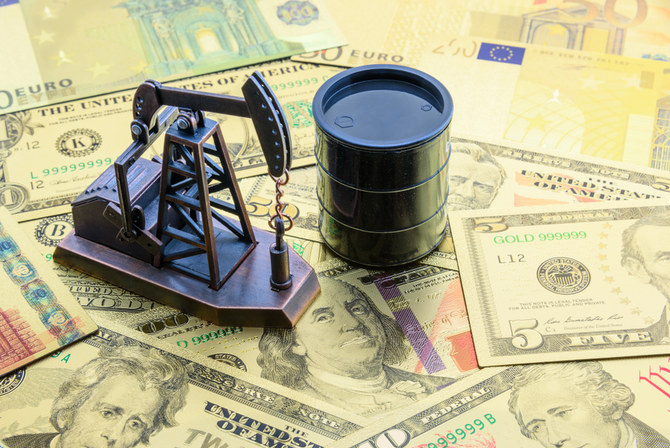
SINGAPORE: Oil edged down on Tuesday after Israel-Hamas ceasefire talks in Cairo helped quell market fears of an expanding conflict in the Middle East, while worries about the outlook for US interest rates dragged on the market, according to Reuters.
Brent crude futures dipped 19 cents, or 0.21 percent, to $88.21 a barrel at 9:30 a.m. Saudi time, while US West Texas Intermediate crude futures slipped 20 cents, or 0.24 percent, to $82.43 a barrel.
The front-month contract of both benchmarks lost more than 1 percent on Monday.
“The ongoing negotiation for a potential ceasefire between Israel and Hamas has led market participants to further unwind the geopolitical risk premium in oil prices, while the upcoming Fed meeting also drives some near-term reservations,” said Yeap Jun Rong, market strategist at IG.
“Rates being kept at elevated levels for longer could trigger a further rise in the US dollar, while also putting some risks to oil demand outlook.”
Hamas negotiators left Cairo late on Monday to consult with the group’s leadership after talks with Qatari and Egyptian mediators on a response to a phased truce proposal that Israel presented on the weekend.
The delegation was expected to report back within two days, two Egyptian security sources said.
While Hamas leaders visited Cairo, Israeli airstrikes killed dozens of Palestinians on Monday, with more than half the dead in the southern Gaza city of Rafah, which foreign leaders have urged Israel not to invade.
Continued attacks by Yemen’s Houthis on maritime traffic south of the key Suez Canal trading route have kept a floor under oil prices and could prompt higher risk premiums if players anticipate crude supply disruptions.
Houthis targeted two US destroyers and the vessel Cyclades in the Red Sea as well as the MSC Orion in the Indian Ocean, the Iran-aligned group’s military spokesman Yahya Sarea said in a televised speech early on Tuesday.
On the economic front, investors are on watch this week for the US Federal Reserve’s May 1 policy review, with stubborn inflation pushing out market expectations for any rate cuts, which could bolster the US dollar and hamper oil demand.
Some investors are cautiously pricing a higher probability that the Fed could hike interest rates by a quarter percentage point this year and next as inflation and the labor market remain resilient.
Additionally, concerns over demand have also weighed on sentiment, ANZ analysts said in a research note, as premiums for diesel and heating oil over crude oil have fallen to their lowest level in months.
“The four-week average consumption in the US is near the average seasonal low of the past five years,” said ANZ, citing data from the Energy Information Administration.












